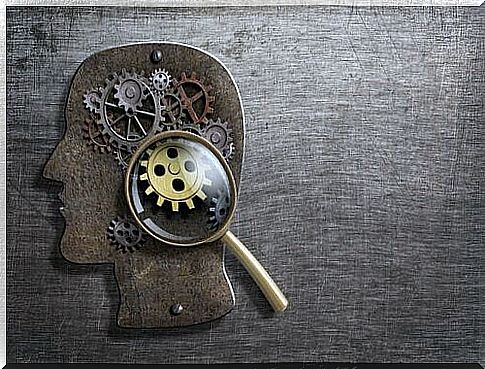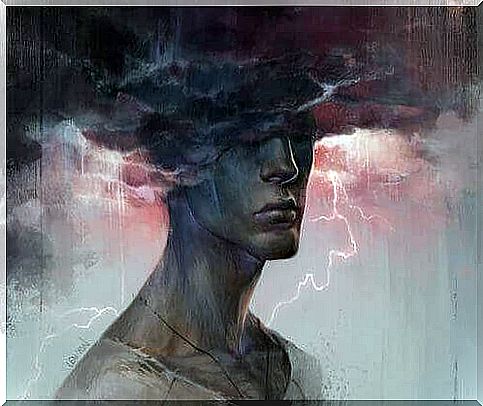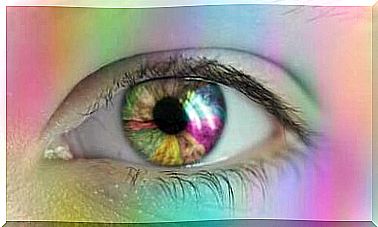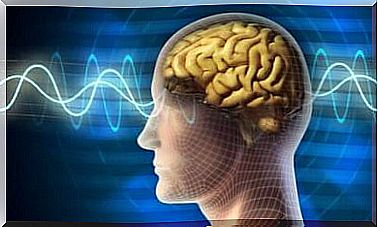Clairvoyance Error: Do You Know What It Is?

We all have expectations and are therefore doomed to clairvoyance error. You’ve probably had the experience of thinking that something would happen a certain way or that you would feel that way. And you’ve probably already made predictions about someone’s behavior. In fact, we do it every day.
The truth is, we spend our lives making predictions about the future. We are sometimes convinced that things will go wrong without having any rational basis to prove it. This is where the anguish appears: it comes from the error of clairvoyance.
Clairvoyance error is a type of cognitive distortion or “thinking error”. We all have them. Cognitive distortions have been thoroughly analyzed in the field of cognitive and behavioral psychotherapy, especially in rational emotional behavior therapy. Let’s see what it consists of.
Rational Emotional Behavior Therapy
Rational Emotional Behavior Therapy (TREC) is a pioneer in the ideas it sets out. It is one of the main cognitive-behavioral therapies. The theoretical and conceptual basis of this type of therapy is found in cognitive psychology and behaviorism.
This type of therapy is a psychological school composed of several authors who share the use of scientific methodology and basic principles. Here are some of those principles:
- Individuals respond to cognitive representations (interpretations, perceptions and evaluations) of environmental events
- Dysfunctional cognition (mistaken thinking) is involved in emotional and behavioral disruption
- Cognitive change produces emotional and behavioral changes
- Cognitions or thoughts can be assessed or recorded

The term cognitive-behavioral is extremely generic and refers to therapies that integrate both cognitive and behavioral techniques. They have an empirical (demonstrable) basis and require the active participation of the patient.
As we said, clairvoyance error is a cognitive distortion identified in the field of rational emotional behavior therapy. There are other cognitive distortions, but in this article we will only focus on them. According to TREC, when we commit these cognitive distortions, we distort reality. While doing this, we may end up feeling anxious or sad.
The clairvoyance error according to David Burns
Psychologist David Burns includes diviner’s error in a larger category of cognitive distortion: rushing conclusions. According to Burns, hasty conclusions occur when we infer ideas that do not necessarily derive from the facts. These conclusions come about because of our brain’s tendency to save energy when processing information.
Two examples of hasty conclusions are thought reading and clairvoyance error. David Burns defines clairvoyance error as follows:
“It’s like you’re in front of a crystal ball that predicts only sadness. You imagine something bad is going to happen and take that prediction for granted (when it isn’t). Imagine, for example, this librarian in a college who, during her anxiety attacks, repeats to herself: I am going to faint or go mad.
These predictions weren’t realistic because she had never fainted. And she had never gone mad. She also did not have any serious symptoms that could suggest an imminent and absolute loss of control.
During a therapy session, a doctor who suffered from acute depression explained to me why he was giving up his profession: I realize that I will be depressed all my life. My sentence will never end and I have no doubts that this treatment or any other is doomed to fail.
This negative prediction about his prognosis made him feel hopeless. The gradual disappearance of her symptoms soon after starting therapy showed her just how false her prophecy was. ”

We are blind, so why jump to conclusions?
We have all already drawn hasty conclusions to answer what we were asked or because our patience was running out… And we realized the mistake made. Imagine you call a friend and they don’t call you back after a while.
It makes you feel sad. You tell yourself that your friend has probably seen your call but hasn’t found it useful to call you back. What is the cognitive distortion present in this example? The one that consists of reading the thoughts of others.
Since you are feeling sad, you decide not to call back or verify what happened. You say to yourself, “He’ll think I’m heavy if I call back. I’m going to be ridiculous ”. Because of these negative predictions (clairvoyance error), you avoid your friend and you feel humiliated.
Three weeks later, you learn that your friend has never received your call. This whole story was just in your head. You took these conclusions which were not true for realities, and you drew from them other conclusions even less correct.
As we have just seen, the error of clairvoyance consists in drawing hasty conclusions about a fact, without having a solid basis. When we do this, we fall victim to a distortion of thought that causes us pain.










